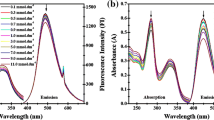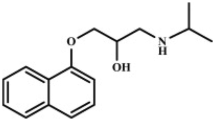Abstract
Many strategies for treating diseases require the delivery of drugs into the cell cytoplasm following internalization within endosomal vesicles. Thus, compounds triggered by low pH to disrupt membranes and release endosomal contents into the cytosol are of particular interest. Here, we report novel cationic lysine-based surfactants (hydrochloride salts of Nε- and Nα-acyl lysine methyl ester) that differ in the position of the positive charge and the length of the alkyl chain. Amino acid-based surfactants could be promising novel biomaterials in drug delivery systems, given their biocompatible properties and low cytotoxic potential. We examined their ability to disrupt the cell membrane in a range of pH values, concentrations and incubation times, using a standard hemolysis assay as a model of endosomal membranes. Furthermore, we addressed the mechanism of surfactant-mediated membrane destabilization, including the effects of each surfactant on erythrocyte morphology as a function of pH. We found that only surfactants with the positive charge on the α-amino group of lysine showed pH-sensitive hemolytic activity and improved kinetics within the endosomal pH range, indicating that the positive charge position is critical for pH-responsive behavior. Moreover, our results showed that an increase in the alkyl chain length from 14 to 16 carbon atoms was associated with a lower ability to disrupt cell membranes. Knowledge on modulating surfactant-lipid bilayer interactions may help us to develop more efficient biocompatible amino acid-based drug delivery devices.







Similar content being viewed by others
Abbreviations
- CMC:
-
Critical micellar concentration
- HC50 :
-
Surfactant concentration that induces 50% hemolysis
- HTAB:
-
Hexadecyl trimethyl ammonium bromide
- MKM:
-
Nε-myristoyl lysine methyl ester
- MLM:
-
Nα-myristoyl lysine methyl ester
- PBS:
-
Phosphate buffered saline
- PEG:
-
Polyethylene glycol
- PKM:
-
Nε-palmitoyl lysine methyl ester
- SEM:
-
Scanning electron microscopy
- SEM:
-
Standard error of the mean
References
Asokan A, Cho MJ (2005) Cytosolic delivery of macromolecules 4. Head group-dependent membrane permeabilization by pH-sensitive detergents. J Control Release 106:146–153. doi:10.1016/j.jconrel.2005.04.010
Benavides T, Mitjans M, Martinez V, Clapés P, Infante MR, Clothier RH, Vinardell MP (2004) Assessment of primary eye and skin irritants by in vitro cytotoxicity and phototoxicity models: an in vitro approach of new arginine-based surfactant-induced irritation. Toxicology 197:229–237. doi:10.1016/j.tox.2004.01.011
Chen F-J, Asokan A, Cho MJ (2003) Cytosolic delivery of macromolecules: I. Synthesis and characterization of pH-sensitive acyloxyalkylimidazoles. Biochim Biophys Acta 1611:140–150. doi:10.1016/S0005-2736(03)00049-X
Chen R, Yue Z, Eccleston ME, Slater NKH (2008) Aqueous solution behaviour and membrane disruptive activity of pH-responsive PEGylated pseudo-peptides and their intracellular distribution. Biomaterials 29:4333–4340. doi:10.1016/j.biomaterials.2008.07.040
Chen R, Khormaee S, Eccleston ME, Slater NKH (2009) The role of hydrophobic amino acid grafts in the enhancement of membrane-disruptive activity of pH-responsive pseudo-peptides. Biomaterials 30:1954–1961. doi:10.1016/j.biomaterials.2008.12.036
Colomer A, Pinazo A, Manresa MA, Vinardell MP, Mitjans M, Infante MR, Pérez L (2011a) Cationic surfactants derived from lysine: effects of their structure and charge type on antimicrobial and hemolytic activities. J Med Chem 54:989–1002. doi:10.1021/jm101315k
Colomer A, Pérez L, Pinazo A, Infante MR, Mezei A, Pons R (2011b) Lysine based surfactants: relationship between chemical structure and adsorption/aggregation properties. In: Proceedings 4th Iberian meeting on colloids and interfaces, Porto, Portugal
Chernitsky E, Senkovich O (1998) Mechanisms of anionic detergent-induced hemolysis. Gen Physiol Biophys 17:265–270
Christie RJ, Grainger DW (2003) Design strategies to improve soluble macromolecular delivery constructs. Adv Drug Deliv Rev 55:421–437. doi:10.1016/S0169-409X(02)00229-6
Dubnicková M, Bobrowska-Hägerstrand M, Söderström T, Iglic A, Hägerstrand H (2000) Gemini (dimeric) surfactant perturbation of the human erythrocyte. Acta Biochim Pol 47:651–660
Gordon EM, Anderson WF (1994) Gene therapy using retroviral vectors. Curr Opin Biotechnol 5:611–616. doi:10.1016/0958-1669(94)90083-3
Hu Y, Litwin T, Nagaraja AR, Kwong B, Katz J, Watson N, Irvine DJ (2007) Cytosolic delivery of membrane-impermeable molecules in dendritic cells using pH-responsive core-shell nanoparticles. Nano Lett 7:3056–3064. doi:10.1021/nl071542i
Infante MR, Pérez L, Morán MC, Pons R, Mitjans M, Vinardell MP, Garcia MT, Pinazo A (2010) Biocompatible surfactants from renewable hydrophiles. Eur J Lipid Sci Technol 112:110–121. doi:10.1002/ejlt.200900110
Janshoff A, Bong DT, Steinem C, Johnson JE, Ghadiri MR (1999) An animal virus-derived peptide switches membrane morphology: possible relevance to nodaviral transfection processes. Biochemistry 38:5328–5336. doi:10.1021/bi982976i
Jones MN (1999) Surfactants in membrane solubilisation. Int J Pharm 177:137–159. doi:10.1016/S0378-5173(98)00345-7
Jones RA, Cheung CY, Black FE, Zia JK, Stayton PS, Hoffman AS, Wilson MR (2003) Poly(2-alkylacrylic acid) polymers deliver molecules to the cytosol by pH-sensitive disruption of endosomal vesicles. Biochem J 372:65–75. doi:10.1042/BJ20021945
Kusonwiriyawong C, van de Wetering P, Hubbell JA, Merkle HP, Walter E (2003) Evaluation of pH-dependent membrane-disruptive properties of poly(acrylic acid) derived polymers. Eur J Pharm Biopharm 56:237–246. doi:10.1016/S0939-6411(03)00093-6
Kyriakides TR, Cheung CY, Murthy N, Bornstein P, Stayton PS, Hoffman AS (2002) pH-sensitive polymers that enhance intracellular drug delivery in vivo. J Control Release 78:295–303. doi:10.1016/S0168-3659(01)00504-1
Lee Y-J, Johnson G, Pellois J-P (2010) Modeling of the endosomolytic activity of HA2-TAT peptides with red blood cells and ghosts. Biochemistry 49:7854–7866. doi:10.1021/bi1008408
Lozano N, Pérez L, Pons R, Pinazo A (2011) Diacyl glycerol arginine-based surfactants: biological and physicochemical properties of catanionic formulations. Amino Acids 40:721–729. doi:10.1007/s00726-010-0710-4
Maher P, Singer SJ (1984) Structural changes in membranes produced by the binding of small amphipathic molecules. Biochemistry 23:232–240. doi:10.1021/bi00297a010
Manrique-Moreno M, Suwalsky M, Villena F, Garidel P (2010) Effects of the nonsteroidal anti-inflammatory drug naproxen on human erythrocytes and on cell membrane molecular models. Biophys Chem 147:53–58. doi:10.1016/j.bpc.2009.12.010
Martínez V, Sánchez L, Busquets MA, Infante MR, Vinardell MP, Mitjans M (2007) Disturbance of erythrocyte lipid bilayer by amino acid-based surfactants. Amino Acids 33:459–462. doi:10.1007/s00726-006-0447-2
McTaggart S, Al-Rubeai M (2002) Retroviral vectors for human gene delivery. Biotechnol Adv 20:1–31. doi:10.1016/S0734-9750(01)00087-8
Mellman I (1996) Endocytosis and molecular sorting. Annu Rev Cell Dev Biol 12:575–625. doi:10.1146/annurev.cellbio.12.1.575
Mitjans M, Martínez V, Clapés P, Pérez L, Infante MR, Vinardell MP (2003) Low potential ocular irritation of arginine-based gemini surfactants and their mixtures with nonionic and zwitterionic surfactants. Pharm Res 20:1697–1701. doi:10.1023/A:1026164123938
Moore NM, Sheppard CL, Barbour TR, Sakiyama-Elbert SE (2008) The effect of endosomal escape peptides on in vitro gene delivery of polyethylene glycol-based vehicles. J Gene Med 10:1134–1149. doi:10.1002/jgm.1234
Morán MC, Infante MR, Miguel MG, Lindman B, Pons R (2010) Novel biocompatible DNA gel particles. Langmuir 26:10606–10613. doi:10.1021/la100818p
Murthy N, Robichaud JR, Tirrell DA, Stayton PS, Hoffman AS (1999) The design and synthesis of polymers for eukaryotic membrane disruption. J Control Release 61:137–143. doi:10.1016/S0168-3659(99)00114-5
Nogueira DR, Mitjans M, Infante MR, Vinardell MP (2011) The role of counterions in the membrane-disruptive properties of pH-sensitive lysine-based surfactants. Acta Biomater 7:2846–2856. doi:10.1016/j.actbio.2011.03.017
Pack DW, Hoffman AS, Pun S, Stayton PS (2005) Design and development of polymers for gene delivery. Nat Rev Drug Discov 4:581–593. doi:10.1038/nrd1775
Paulsson M, Edsman K (2001) Controlled drug release from gels using surfactants aggregates. Part II: vesicles formed from mixtures of amphiphilic drugs and oppositely charged surfactants. Pharm Res 18:1586–1592. doi:10.1023/A:1013086632302
Pérez L, Pinazo A, Vinardell MP, Clapés P, Angelet M, Infante MR (2002) Synthesis and biological properties of dicationic arginine-diglycerides. New J Chem 26:1221–1227. doi:10.1039/b203896j
Pérez L, Pinazo A, García MT, Lozano M, Manresa A, Angelet M, Vinardell MP, Mitjans M, Pons R, Infante MR (2009) Cationic surfactants from lysine: synthesis, micellization and biological evaluation. Eur J Med Chem 44:1884–1892. doi:10.1016/j.ejmech.2008.11.003
Plank C, Oberhauser B, Mechtler K, Koch C, Wagner E (1994) The influence of endosome-disruptive peptides on gene transfer using synthetic virus-like gene transfer systems. J Biol Chem 269:12918–12924
Plank C, Zauner W, Wagner E (1998) Application of membrane-active peptides for drug and gene delivery across cellular membranes. Adv Drug Deliv Rev 34:21–35. doi:10.1016/S0169-409X(98)00005-2
Preté PSC, Gomes K, Malheiros SVP, Meirelles NC, Paula E (2002) Solubilization of human erythrocyte membranes by non-ionic surfactants of the polyoxyethylene alkyl ethers series. Biophys Chem 97:45–54. doi:10.1016/S0301-4622(02)00042-X
Rasia M, Spengler MI, Palma S, Manzo R, Lo Nostro P, Allemandi (2007) Effect of ascorbic acid based amphiphiles on human erythrocytes membrane. Clin Hemorheol Microcir 36:133–140
Roy S, Das PK (2008) Antibacterial hydrogels of amino acid-based cationic amphiphiles. Biotechnol Bioeng 100:756–764. doi:10.1002/bit.21803
Sandhu JS, Keating N, Hozumi N (1997) Human gene theraphy. Crit Rev Biotechnol 17:307–326. doi:10.3109/07388559709146617
Sánchez L, Mitjans M, Infante MR, García MT, Manresa MA, Vinardell MP (2007) The biological properties of lysine-derived surfactants. Amino Acids 32:133–136. doi:10.1007/s00726-006-0318-x
Schöler N, Olbrich C, Tabatt K, Müller RH, Hahn H, Liesenfeld O (2001) Surfactant, but not the size of solid lipid nanoparticles (SLN) influences viability and cytokine production of macrophages. Int J Pharm 221:57–67. doi:10.1016/S0378-5173(01)00660-3
Seo K, Kim D (2010) pH-dependent hemolysis of biocompatible imidazole-grafted polyaspartamide derivatives. Acta Biomater 6:2157–2164. doi:10.1016/j.actbio.2009.11.016
Sheetz MP, Singer SJ (1974) Biological membranes as bilayer couples. A molecular mechanism of drug-erythrocyte interactions. Proc Natl Acad Sci USA 71:4457–4461
Spengler MI, Rasia M, Palma S, Allemandi D (2011) Effects of ascorbate fatty ester derivatives on erythrocyte membrane lipoperoxidation. Clin Hemorheol Microcirc 47:163–168. doi:10.3233/CH-2010-1266
Stayton PS, Hoffman AS, Murthy N, Lackey C, Cheung C, Tan P, Klumb LA, Chilkoti A, Wilbur FS, Press OW (2000) Molecular engineering of proteins and polymers for targeting and intracellular delivery of therapeutics. J Control Release 65:203–220. doi:10.1016/S0168-3659(99)00236-9
Tabohashi T, Tobita K, Sakamoto K, Kouchi J, Yokohama S, Sakai H, Abe M (2001) Solution properties of amino acid-type new surfactants. Colloids Surf B Biointerfaces 20:79–86. doi:10.1016/S0927-7765(00)00170-3
Temin HM (1990) Safety considerations in somatic gene therapy of human disease with retrovirus vectors. Hum Gene Ther 1:111–123. doi:10.1089/hum.1990.1.2-111
Vyas SM, Turánek J, Knötigová P, Kasná A, Kvardová V, Koganti V, Rankin SE, Knutson BL, Lehmler HJ (2006) Synthesis and biocompatibility evaluation of partially fluorinated pyridinium bromides. New J Chem 30:944–951. doi:10.1039/B516039A
Wang X-L, Ramusovic S, Nguyen T, Lu Z-R (2007) Novel polymerizable surfactants with pH-sensitive amphiphilicity and cell membrane disruption for efficient siRNA delivery. Bioconjug Chem 18:2169–2177. doi:10.1021/bc700285q
Wang XL, Nguyen T, Gillespie D, Jensen R, Lu ZR (2008) A multifuncional and reversibly polymerizable carrier for efficient siRNA delivery. Biomaterials 29:15–22. doi:10.1016/j.biomaterials.2007.08.048
Wang X-L, Xu R, Lu Z-R (2009) A peptide-targeted delivery system with pH-sensitive amphiphilic cell membrane disruption for efficient receptor-mediated siRNA delivery. J Control Release 134:207–213. doi:10.1016/j.jconrel.2008.11.010
Wasungu L, Hoekstra D (2006) Cationic lipids, lipoplexes and intracellular delivery of genes. J Control Release 116:255–264. doi:10.1016/j.jconrel.2006.06.024
Yessine MA, Lafleur M, Meier C, Petereit HU, Leroux JC (2003) Characterization of the membrane-destabilization properties of different pH-sensitive methacrylic acid copolymers. Biochim Biophys Acta 1613:28–38. doi:10.1016/S0005-2736(03)00137-8
Zaragoza A, Aranda FJ, Espuny MJ, Teruel JA, Marqués A, Manresa A, Ortiz A (2010) Hemolytic activity of a bacterial trehalose lipid biosurfactant produced by Rhodococus sp.: evidence for a colloid-osmotic mechanism. Langmuir 26:8567–8572. doi:10.1021/la904637k
Acknowledgments
This research was supported by the Project CTQ2009-14151-C02-02 from the Ministerio de Ciencia e Innovación (Spain). We also thank Dr. Núria Cortadellas for her expert technical assistance with the SEM experiments. Daniele Rubert Nogueira holds a doctoral grant from MAEC-AECID (Spain).
Conflict of interest
The authors declare that they have no conflict of interest.
Author information
Authors and Affiliations
Corresponding author
Rights and permissions
About this article
Cite this article
Nogueira, D.R., Mitjans, M., Morán, M.C. et al. Membrane-destabilizing activity of pH-responsive cationic lysine-based surfactants: role of charge position and alkyl chain length. Amino Acids 43, 1203–1215 (2012). https://doi.org/10.1007/s00726-011-1176-8
Received:
Accepted:
Published:
Issue Date:
DOI: https://doi.org/10.1007/s00726-011-1176-8




